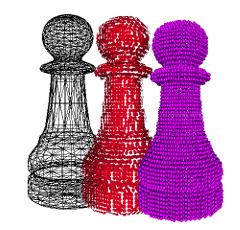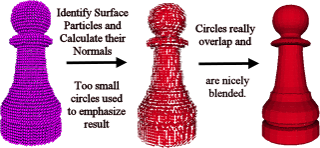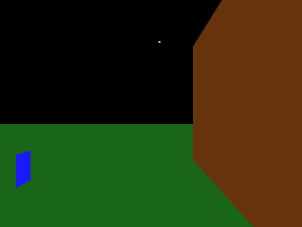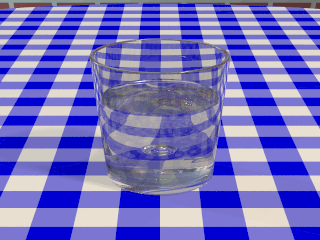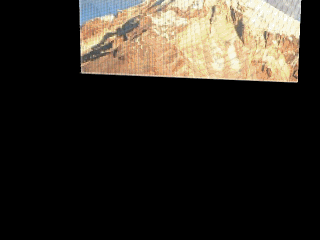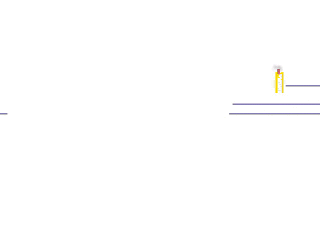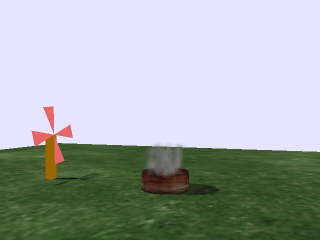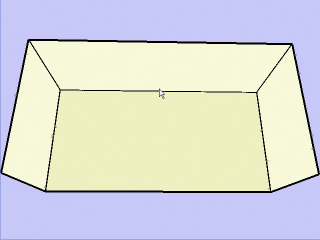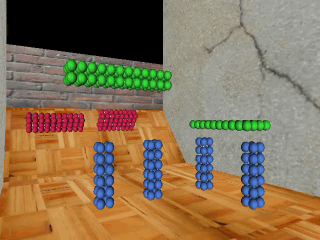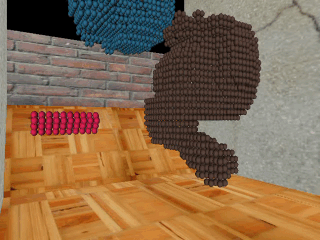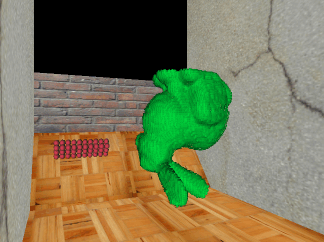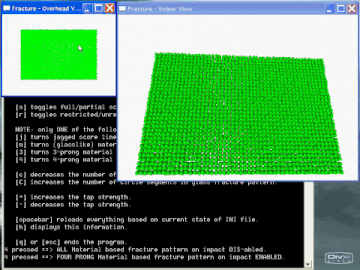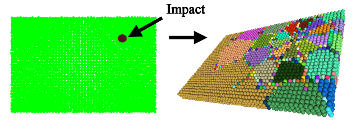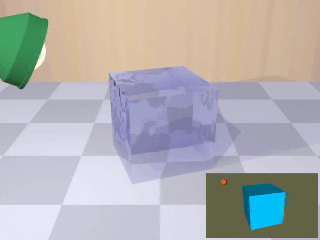|
Fracturing can be slow and using spring or spring-like connections is known to be bad.
Using volpars it is possible to apply a 'surface scoring' method to achieve reasonably
plausible results. The examples show a four-prong based method (the fracture splits
in 4 directions) and a glass-based fracture (radial outward).
This technique was applied to 3D objects and it easily adapts to be usable
with any fracture pattern.
The fracture patterns can be generated in a variety of ways (diffusion limited aggregation (DLA),
random walks, fractals, or user drawn). The patterns might also be acquired from edge detection
on real world images of similar material types.
Notice the volpar objects auto-form into fractured pieces. This is because the volpars are 'aware' of
what they are and are not connected to. The coloring in the second image was automatically
achieved when the object was fractured. This coloring effect can also be seen in the top animation.
This method also adapts based on the connective properties of the volpar object. So things like
mortar in a wall can be 'weaker' than than the solid brick.
In sum it has Art + Real World options!
This method was tested on different types, sizes, and shapes of objects.
|
